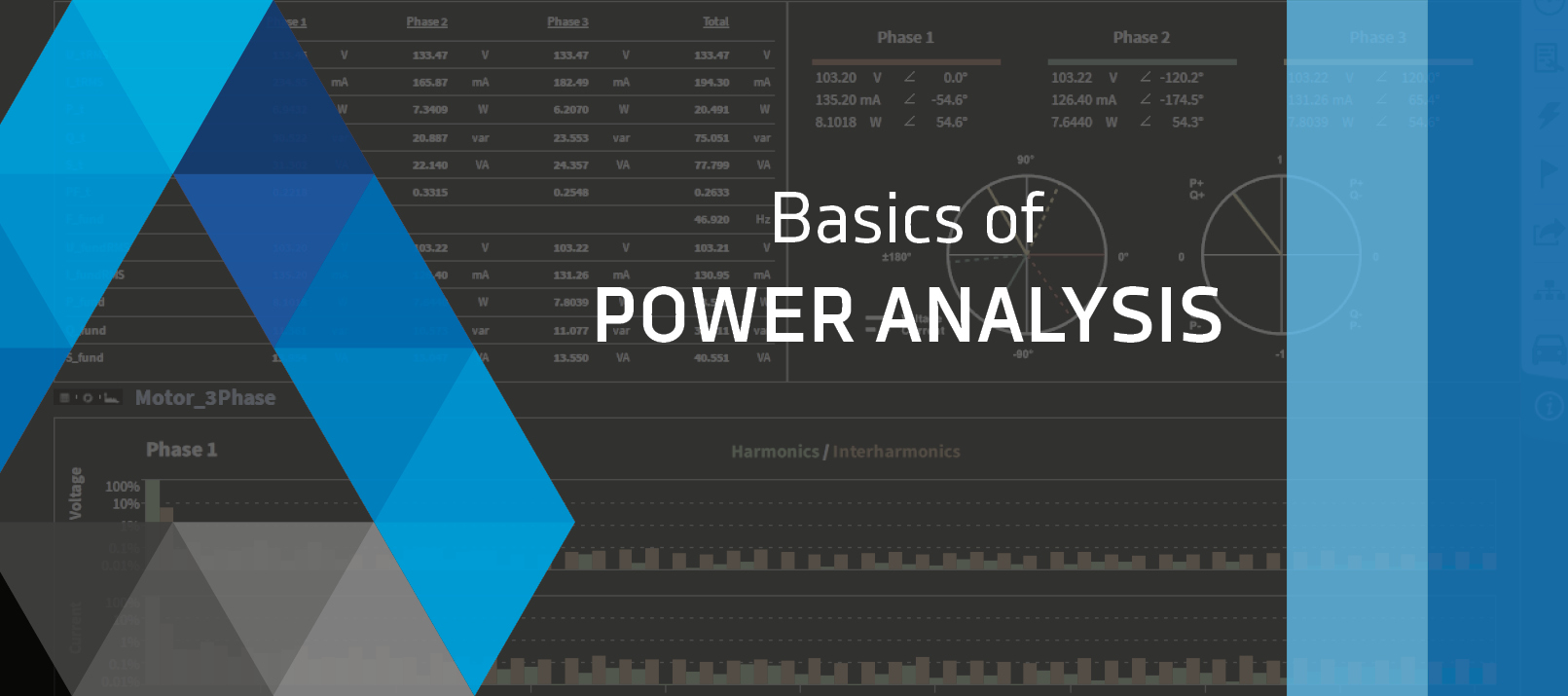The Basics of Power Analysis in OXYGEN

Power analysis is a complex field that requires a solid understanding of the various parameters and calculation algorithms. Our OXYGEN measurement software provides you with a robust and comprehensive power analysis feature that allows you to turn your DEWETRON measurement device into a full-fledged power analyzer. However, before you get started, you should familiarize yourself with the basics of performance analysis and understand how it is seamlessly integrated into OXYGEN. This blog post serves as an introduction to how to effectively use the OXYGEN performance analysis function.
Analysis of three-phase power system
First, the following analysis assumes a three-phase power grid, as this is still the usual method of generating, transmitting, and distributing electricity. Although there is a distinct trend towards polyphase engines with more than 3 phases, the three-phase engine is still the most commonly used engine.
Note: The question “What is three-phase power?” we answer in our blog post about the difference between power group and power phase!
To start with power analysis in OXYGEN, you first need to physically connect the three-phase system to a DEWETRON Power Analyzer. You can opt for a DELTA or STAR configuration.
DELTA configuration
DELTA configuration measures line-line voltages. In other words, a DELTA configuration measures the potential difference between lines, where a single line represents a single conductor. In the case of a three-phase system, there are three lines (see the left illustration in Figure 1).
STAR configuration
Another way to set up your power analysis is the STAR configuration, which has an additional line – the neutral conductor (see right panel in Figure 1). Within the STAR configuration, you measure the phase-line voltages, meaning that you measure the potential difference between any line and the neutral conductor. In case a neutral line is not accessible within the STAR configuration, we recommend employing a DELTA configuration.

Figure 1: DELTA configuration (left) and STAR configuration (right) with TRION-1820 power modules.
The type of configuration does not influence the measurement results. When you use a DELTA configuration, our measurement software will recalculate the phase-to-phase voltages and output the STAR voltages as well. For the remaining text, we assume the implementation of a DELTA configuration.
Measuring with DEWETRON’s power analyzer
By using a DELTA connection, it is possible to measure the chained voltages and current directly with the power module of the power analyzer. Nevertheless, depending on the current intensity (e.g. for high currents) it is necessary to implement a current transducer. Optionally, you can also measure current indirectly – for example, by using a zero-flux transformer. If so, you also need to measure the voltage and current for the inverter.
How to implement a current transducer?
To measure high current values, you must scale the current transducer in OXYGEN. Depending on whether the current transducer has a voltage or current output, you can utilize different measurement modules. For instance, when dealing with a current transducer like the LEM IN 500, you require the number of secondary turns necessary for configuration within OXYGEN. You can locate this value in the datasheet. When you access the setup of the module, input the number of secondary turns into the scaling field. This constitutes the entire configuration process necessary before employing a current transducer in OXYGEN.
If you have different current transducers or use your current transducer for every measurement task, you can also set it up as a sensor in the sensor database. There you can store sensors and their configuration for use whenever needed. This saves valuable time during the system configuration.
Power groups in OXYGEN
In OXYGEN, a power group operates as a calculation group that calculates power parameters for the chosen voltage and current channels. You have the freedom to define the channels you wish to utilize for calculations. For instance, you can designate a motor as a power group. In one of our webinars, we showcased various techniques for creating a power group and explored the fundamentals of power analysis in OXYGEN.
Do you also want to learn how to calculate the efficiency of an inverter, how long-time measurements work, or how the calculation intervals are defined in OXYGEN? Then check our learning platform DEWETRON Academy and you will learn how those, and more measurement tasks can easily be set up in OXYGEN!





